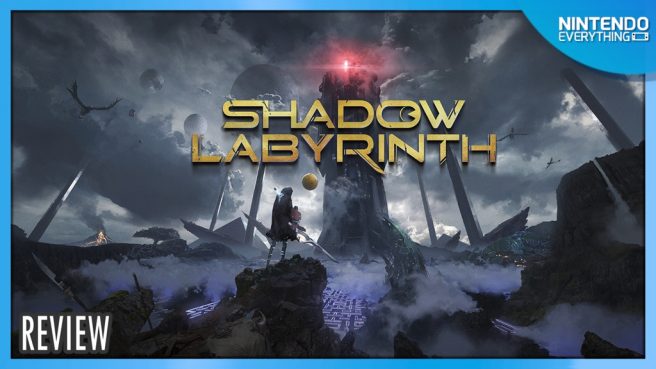Shadow Labyrinth review for Nintendo Switch 2
System: Switch 2 (also on Switch)
Release date: July 17, 2025
Developer: Bandai Namco
Publisher: Bandai Namco
I wish I could have been a fly on the wall during the pitch meeting for Shadow Labyrinth. Of all the ways Bandai Namco could have commemorated the 45th anniversary of Pac-Man, the idea the company landed on was to release an exploration-driven action-platformer set on a sprawling sci-fi planet. Not only that, but Bandai Namco greenlit, developed, and released a game in which the player is accompanied by a dark (possibly evil?) take on Pac-Man named Puck, who devours the souls of slain enemies to help the player level up. It’s a bonkers concept for a spin-off, and one I knew I needed to experience for myself to fully understand.
Shadow Labyrinth kicks off by showing someone in a modern-looking city, playing a game on a handheld console before they suddenly disappear into thin air. Immediately after, in a dimly-lit room filled with what looks like cryogenic chambers, the player awakens as Swordsman #8, who is promptly coerced by Puck into accompanying him in his journey across the planet. It’s not wholly obvious at the start what is going on, but Puck alludes that he’s summoned others to this place before to assist him in his mission, and that it hasn’t gone well. If you’ve watched the accompanying episode of Amazon show Secret Level that directly connects to Shadow Labyrinth’s plot, you’ll have a sense for the direction things are heading in.
In hindsight, it does make some sense at the conceptual level. Pac-Man is known for about three things, and one of them is navigating mazes, so creating a game in which the player explores a labyrinthine world with him as a companion actually has some logic to it. You could reasonably call the game a Metroidvania as it does check most of the boxes: open-ended side-scrolling exploration, progression that’s gated by unlocking new abilities, and combat that starts with a few simple fundamentals that the game expands over time. There are a few ways in which the game diverges a bit from the genre, but for the most part its structure will be familiar if you’ve played similar games before.
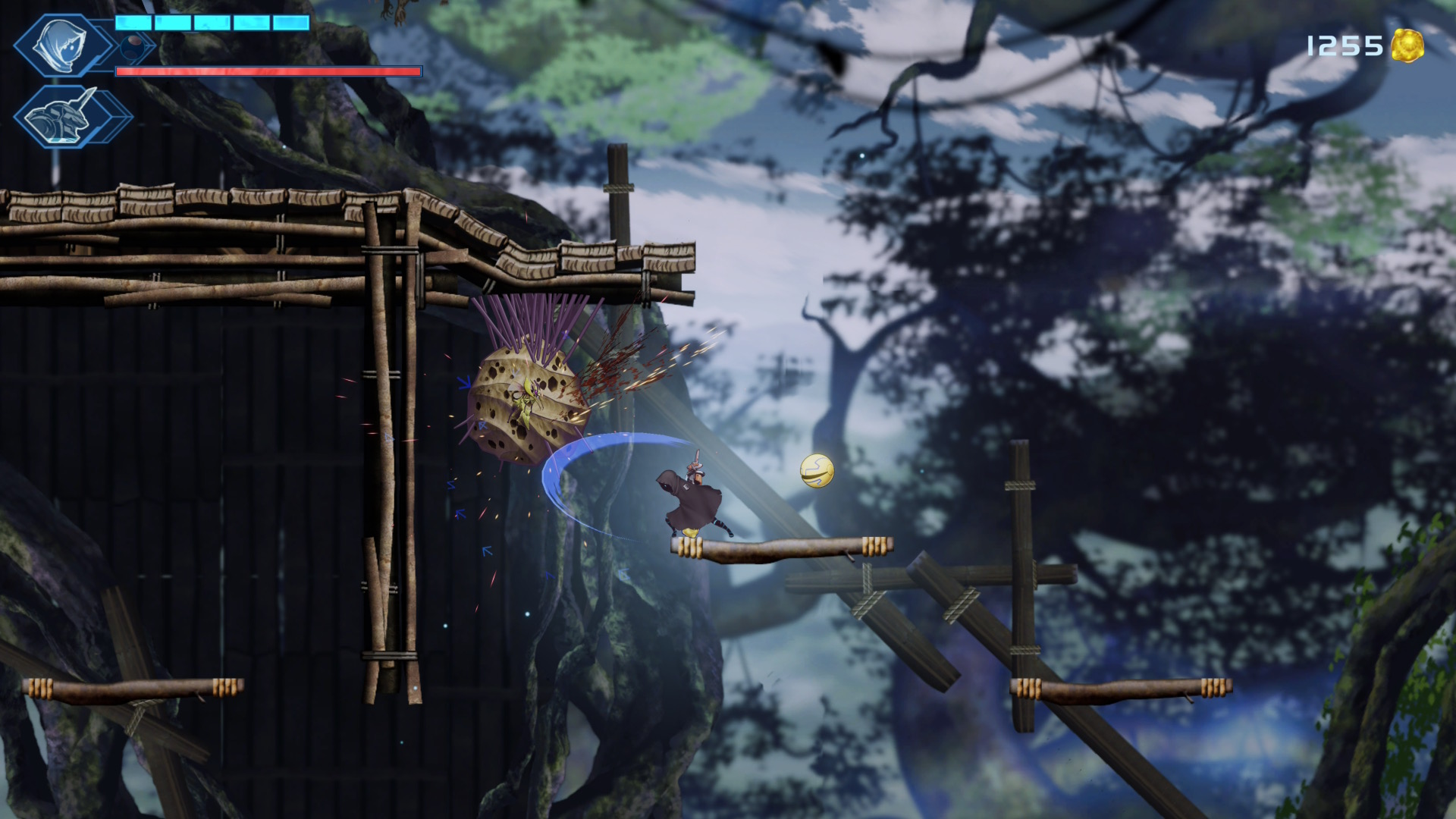
These days when I boot up a new game for the first time, my biggest hope is that I’ll find a way to be surprised while playing. And while the concept driving Shadow Labyrinth sparked some initial intrigue, the game has a difficult time maintaining that momentum over the course of its lengthy runtime. This is a title that could take most players over thirty hours, depending on playstyle. Once you set aside the novelty of having Puck as the player’s companion, at its core, there is very little that Shadow Labyrinth does that feels new or innovative for most of the game’s runtime. The fundamentals of exploration and combat are perfectly serviceable, but almost everything beyond the premise has been executed better elsewhere. For the first fifteen hours or so that I was playing, I found myself wondering when or if the game would evolve into something more interesting at the mechanical level. And while it eventually does, to some extent, I think it takes a little too long to get to “the good stuff” and could see some players bouncing off before that happens.
I won’t attempt to fully explain it because honestly, I’m not sure I fully understand it myself, but the main thing you need to know about the story direction of Shadow Labyrinth is that this is not a standalone story. Instead, much to my surprise, apparently it’s set in an ongoing chronology that spans across multiple Bandai Namco games, spanning everything from Gradius to Dig Dug, plus many lesser-known games from the company’s gameography. Shadow Labyrinth is set towards the end of that timeline, after many battles have been fought and lost against an overwhelming force, and without getting too into the weeds, Puck and the other characters occupying this planet are all involved in this ongoing war. Frustratingly, the game seems to assume that players are up-to-date on this timeline, and characters will throw out names and references to it that are never adequately contextualized. So, unless you are actively Google searching things as you play, if you’re anything like me you’ll probably end up writing off the story entirely at a certain point. I think a more self-contained tale would have been the better approach for this game.
I think my biggest disappointment with Shadow Labyrinth is its world. Considering how massive the map is, the environments themselves are fairly rote in their art direction and environmental design. I’m not inherently opposed to exploring underground caves in a game, but when most of my time was spent exploring various types of caverns and tunnels that only felt distinguished by what color they were, it’s hardly the most exciting thing in the world. That feeling is amplified by a lack of visual landmarks in the world, which makes it more difficult to memorize the map. Some of this could be by design, and there is a good sense of feeling lost in Shadow Labyrinth which aligns well with the game’s narrative conceit. Still, when I think back to some of my favorite side-scrolling adventure games – titles like Ori and the Will of Wisps and Child of Light – I know that the world itself is one of the things I’ll remember the least.
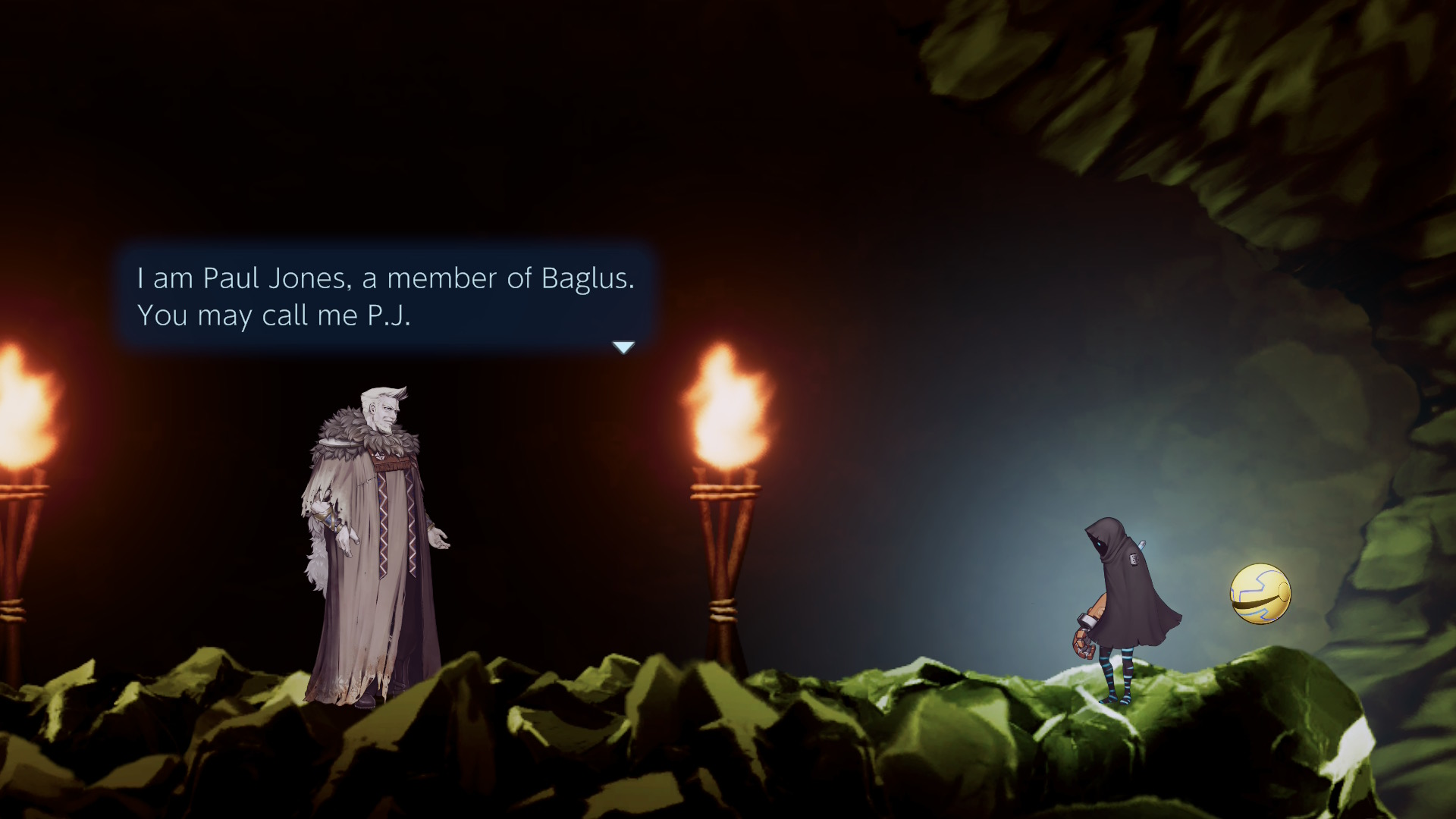
I also found the game’s art direction a bit bland, outside of a few segments in the game where things are dialed up to eleven. Because of how characters and enemies are animated, they almost look like paper cut-outs that are floating on top of the environments, rather than truly being a part of it. The world itself relies on a subtle parallax effect to create an illusion of depth, but this effect is often so understated that in most biomes it feels like there is no depth to the world at all. There’s a distinct lack of visual flair outside of boss battles, and because of how simple everything looks, the sense of atmosphere and mystery is weakened as a result. It’s not bad, just a little boring to look at on a regular basis. I had similar thoughts about the game’s music and UI design – not bad, just a little milquetoast.
Really, the main thing that kept me going in Shadow Labyrinth was the gameplay loop of exploration and combat, which I enjoyed overall. The actual map design and layout is great, filled with branching paths that spider out in every direction as you’d expect from a game in this genre. There are plenty of just-out-of-reach ledges, one-way doors, and other obstacles that kept me wanting to explore, to see how much I could access with my current slate of abilities before moving on. Traversal feels pretty good; the Swordsman moves in a predictable way, and when you start unlocking abilities like a mid-air dash and a grappling beam, it can be fun to leap through large chunks of the map without touching the ground.
That said, exploration also has some risk involved as save points are few and far between, so death can result in the player getting sent back to a location that was quite a ways away. Additionally, there are two types of save points, and the one that is more common is also less useful, only allowing you to partially restore your health or teleport back to a previously discovered save point. The more useful ones, which let you upgrade your character, equip perks, and fully restore health, typically only have one or two scattered across each biome. I enjoyed factoring this into my exploration rhythm, but it can be frustrating at times when faced against a challenging boss or environmental obstacle.
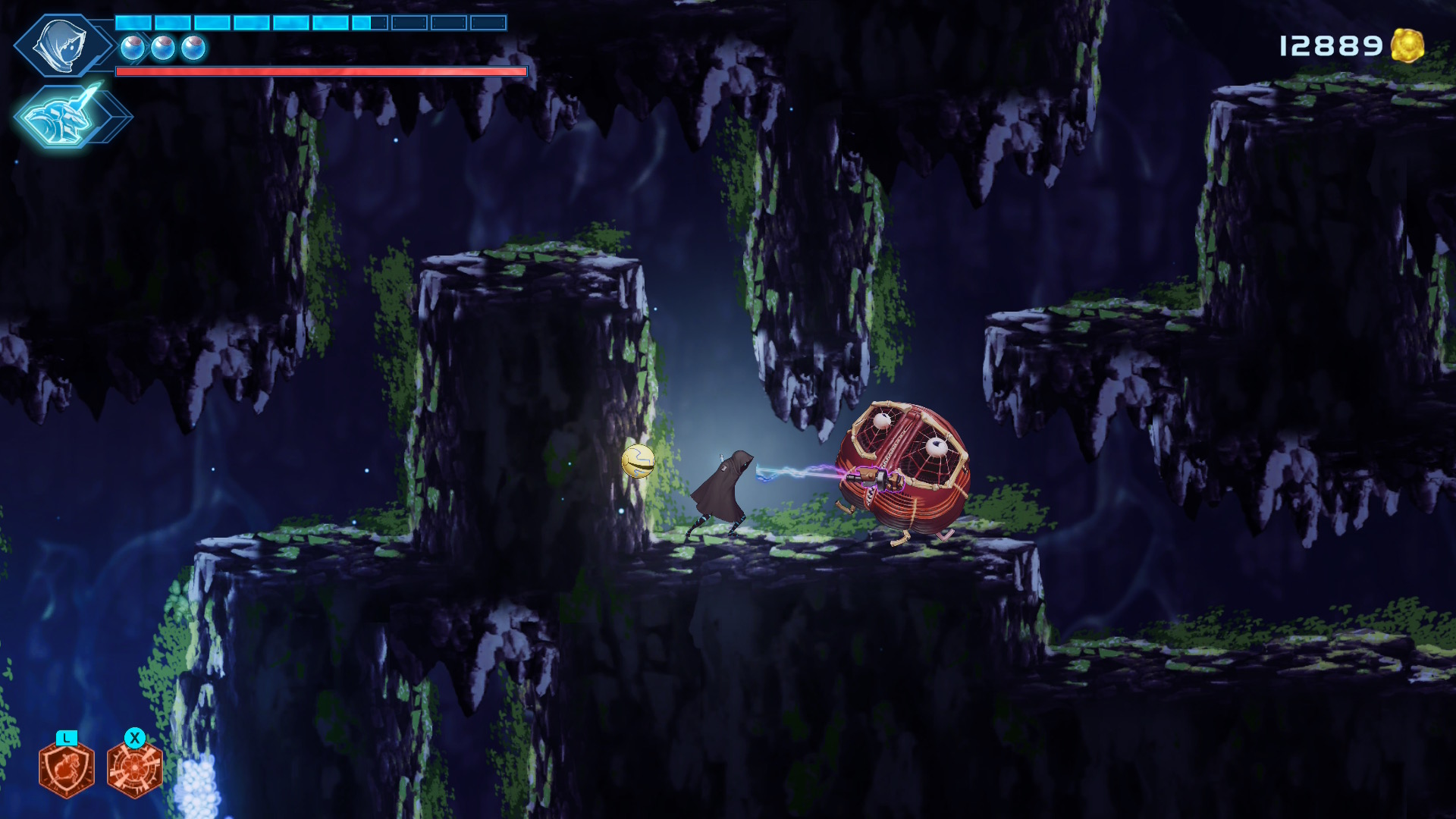
Typically when I play these games, I try to fully explore a section of the map as much as possible before progressing, and this was often to my benefit. I’d often find a much needed health pickup just when I needed it, although I’d say that overall there are fewer of these types of helpful upgrades scattered around than I expected. A good chunk of the collectibles are less-useful gems that can eventually be traded in for upgrades, but the cost to spend these on anything useful is somewhat high, so the payoff to actually use them is delayed. I also found myself picking up a lot of journal entries that attempt to explain more of the backstory of this world, but at a certain point in my playthrough my interest in reading these fell off a cliff, thanks to the aforementioned convoluted plot. Most of the major upgrades to the Swordsman’s abilities are won from boss battles, and there are also useful perks that can be purchased at shops. These are more exciting, although they rarely surprised me in what they enabled me to do.
One of the ways in which this game leans into its identity as a weird Pac-Man spinoff is that the player will also stumble across what are called D-line routes. These are essentially magnetic rails that, when touched, turn the player into Pac-Man, allowing them to climb up the rails, collect more Ora (the game’s main currency), and reach otherwise inaccessible areas. They are satisfying to traverse, although to my dismay they aren’t very common and make up a relatively small part of the map, with each biome generally having only a few small sections that incorporate them. I would have liked to see the developers lean into this a bit more as it’s one of the few things that might have helped this game feel more unique if it played a bigger role in the map design.
Beyond that, the player will eventually also unlock the ability to enter Maze levels, of which there’s generally one per biome. These are fast-paced, arcade like minigames in which the player does the Pac-Man thing: navigating a maze, collecting pellets, and attacking ghosts. But these aren’t traditional Pac-Man levels; instead, they play like fast-paced puzzles with some time-rush flair. Each one gives the player five minutes to eat enough ghosts to move through four or five stages, but it requires some platforming to do so, jumping between rails, pushing blocks into enemies to damage them, and collecting enough pellets to turn ghosts blue before battling the “big” ghost at the end. That the player needs to consider gravity, the angle at which they are jumping between platforms, and the way objects can be moved around the stage makes these levels a thrill. Really, the only downside is that there are so few of them, and that it might take players a good chunk of time to reach the point in the story in which they are accessible, especially if you are exploring a lot.
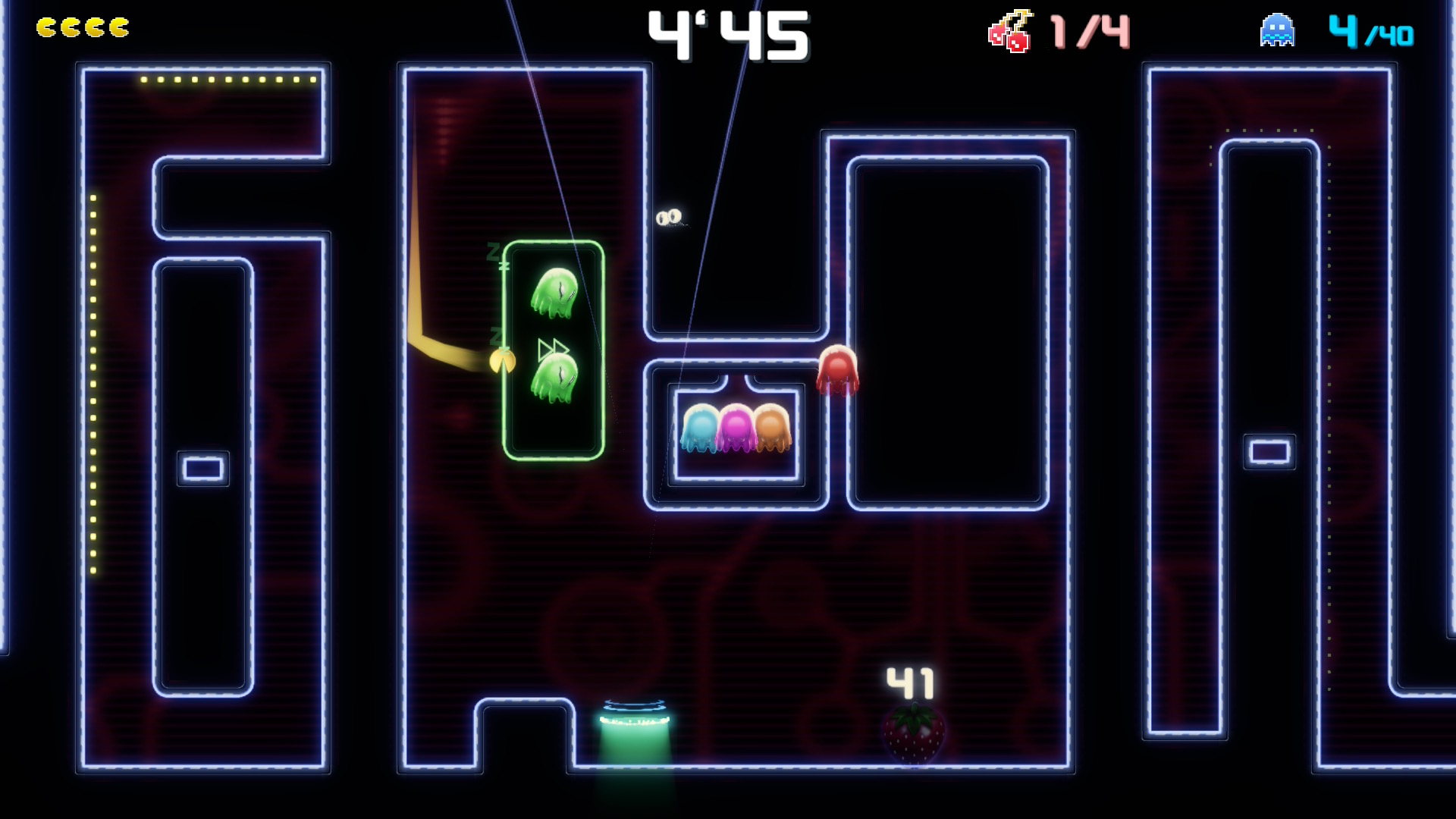
While exploration is a big focus of Shadow Labyrinth, this is also a very combat-heavy game, perhaps more so than you’d initially expect. The Swordsman has a basic three-swing melee combo that the player will use constantly, as well as various special attacks that can be unlocked over the course of the game, such as a grenade-like projectile or a long-range sword slash that sends a wave of damage through the air. Beyond that, the player also can transform into – I kid you not – a mech. This form is called GAIA, and while activated the Swordsman can take and deal more damage than normal, as well as eventually fire a massive laser beam that can decimate obstacles and bosses. While special attacks and dodge are tied to a recharging meter, GAIA form is earned by devouring enemies with Puck after defeating them, which also nets resources used for upgrades. There’s also a stun attack and a parry available, although the latter can only be used against certain types of attacks.
The fundamentals of combat are solid, but for most of Shadow Labyrinth there is very little the player needs to do (or even can do, really) beyond use the sword attack, and dodge enemy attacks. It does not take very long before basic enemies become fodder for your blade, and Shadow Labyrinth does not seem to do much to keep that interesting beyond throwing more of them at you. The general enemy variety is also a little lacking, and while new foes are introduced across the various biomes, there aren’t as many as you would expect and many of them behave in similar ways. Halfway through the game, I was losing interest in fighting them, especially as by that point I had more than enough Ora saved up to continue upgrading the Swordsman. I’d sometimes just dash past foes entirely to avoid risking taking unnecessary damage.
Boss battles, on the other hand, are a lot more fun, and there are plenty of them. While some of the smaller ones are simple and are reused multiple times, such as a blob of slime that spews magma onto the floor to force the player to find higher ground, many of the game’s big bosses are extremely challenging. Most have several phases and multiple attacks they can utilize in each phase, and there is a degree of randomness as to in what order these attacks might play out. This keeps things interesting, but the bosses can also be damage sponges, and considering how much damage they can deal it’s totally possible to get wiped out in only a few hits. When you combine this with the fact that it will likely take most players several attempts to learn attack patterns, and factor in the backtracking that is often required after dying, it makes for an experience that can be quite challenging. Sometimes this was fun; other times, it was frustrating. To what extent players will enjoy this will vary depending on their tolerance for trial and error.
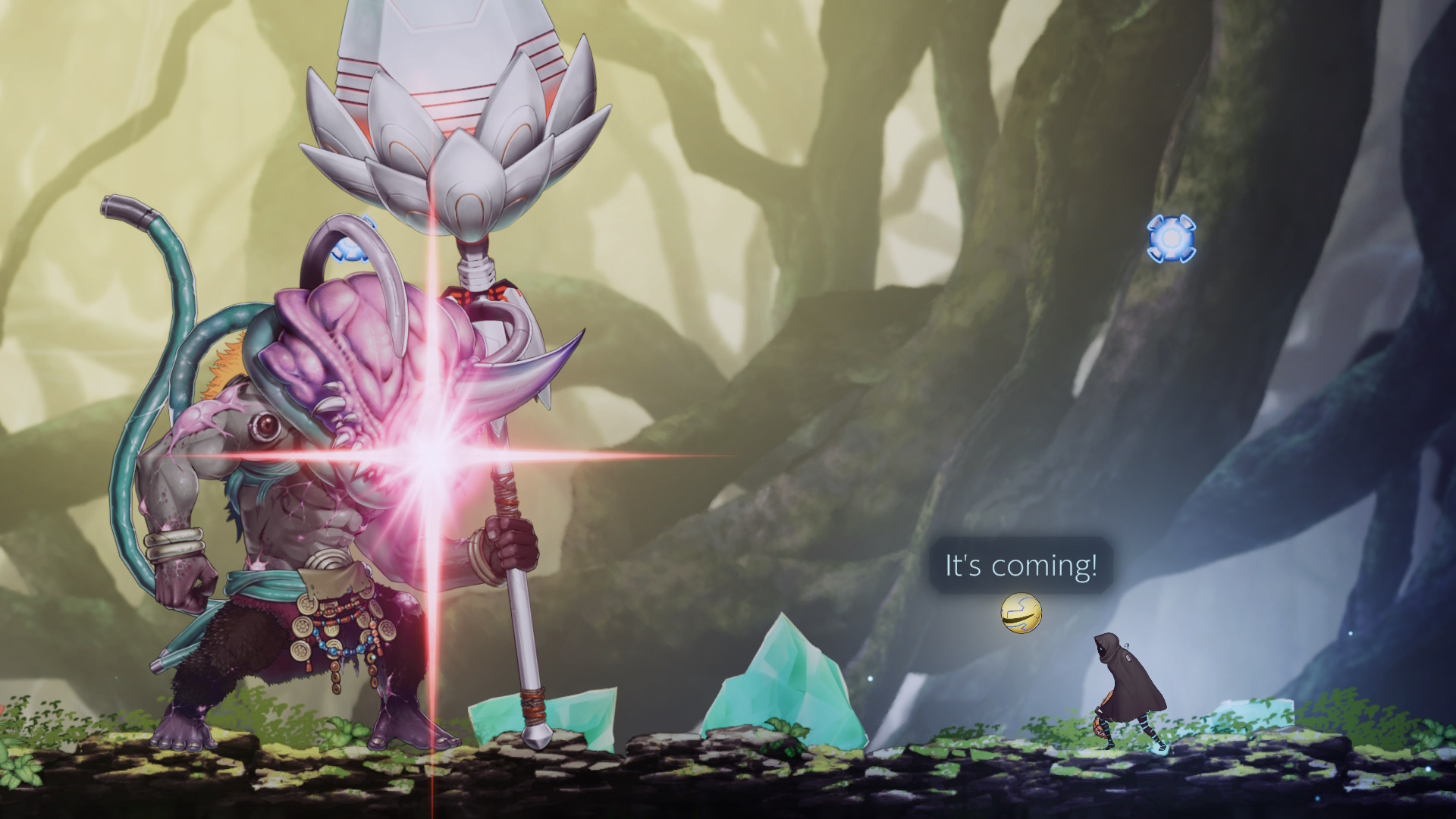
I did run into a few instances where it felt like certain encounters needed additional polish. I recall one instance in which a boss would shoot a flame attack across the ground, that would occasionally pass through me without damaging me, but only sometimes. In another fight against a boss with a massive sword, I’d occasionally run into an issue where, while standing in an area that should have been safe, for some reason the Swordsman would slide into the enemy’s attack range. Overall, I also noticed some framerate drops, although a pre-launch patch ironed most of those out, and the game generally runs a lot better now.
By the time I approached the end of Shadow Labyrinth, I felt that overall I had enjoyed my time with the game, although my experience as a whole was less exciting than I had initially hoped. There’s very little that I feel will stick with me in the long term beyond its premise, some cool boss battles, and the maze levels. Beyond that, the game is a pretty standard exploration platformer that plays things surprisingly by-the-numbers, and falls short of greatness in a few areas. I’m glad it exists, as these are the types of creative projects I want to see more of from big developers like Bandai Namco, but I think it could have been even better with some more focus and a refined vision.

Shadow Labyrinth‘s identity as a strange, dark Pac-Man spin-off is a strong foundation for a well-designed side-scrolling adventure, and it does a good job at executing the fundamentals for an exploration-driven action platformer. A well-designed map, some interesting boss battles, and a solid gameplay loop result in an experience that at least executes the basics and is generally satisfying to play. But a messy story, uninspired game world, and a gameplay loop that doesn’t evolve often enough results in an experience that misses its full potential over the course of its lengthy runtime.
Shadow Labyrinth copy provided by the publisher for the purposes of this review.
